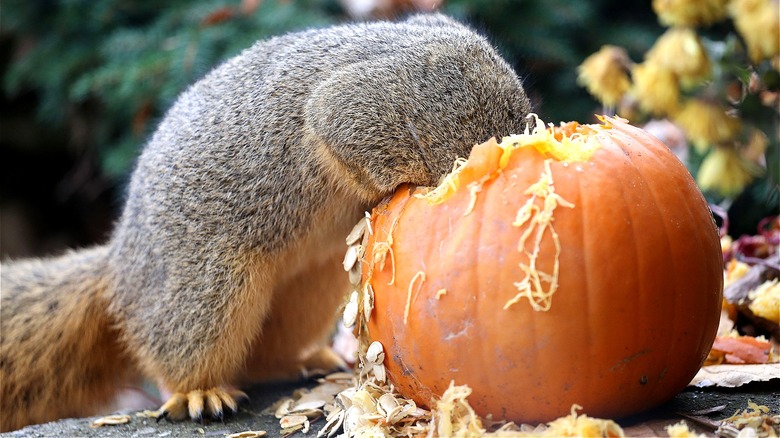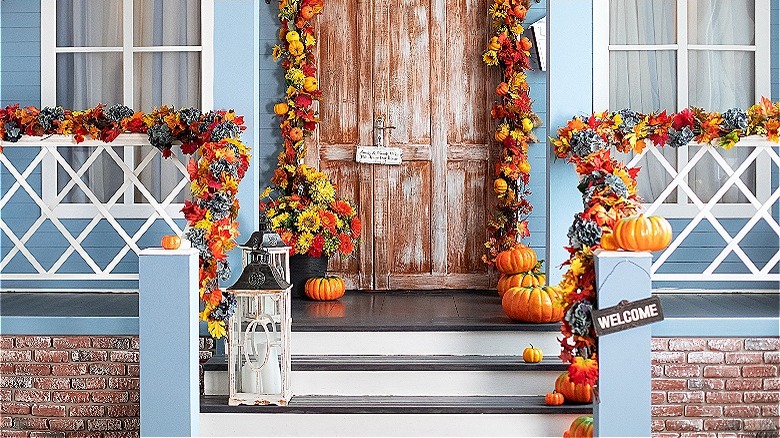Give Your Pumpkins A Glossy Shine While Also Deterring Pests With A Common Spray
If you've got pumpkins on display outside your home to celebrate the fall, chances are you've attracted the attention of some neighborhood pests — particularly, squirrels and other wildlife. Animals, like squirrels, love to munch on pumpkins for the winter squash's sweet, earthy flavor, in addition to its high nutritional content. So the objective here is to not only keep animals from eating your pumpkins, but also preserve your fall décor to last the season. And as it turns out, you can achieve both with one common spray: lacquer.
Lacquers are high-gloss coatings that enhance the look of an object, often applied over coats of paint or stain as a preservative and protectant of that finish. Sometimes mistaken for varnish or shellac, lacquer is actually quite different, both chemically and in terms of its application and durability. Unlike varnish, for example, lacquers are sprayed on, giving you a thin, even coating that's highly resilient but harder to maintain over time. Meanwhile, shellac, while biodegradable, isn't very durable at all and can be easily washed or scratched away, especially in high-contact environments like an exposed front porch. Since your pumpkin needs to be impenetrable but ultimately isn't meant to last more than several weeks, lacquer is the best choice.
Spraying lacquer on pumpkin décor
Lacquer can be found in any hardware store, generally in an aerosol can. To give your fall pumpkins a glossy, pest-deterring finish, simply spray the lacquer on pumpkin surfaces. Note, this hack doesn't work for carved pumpkins, as lacquer isn't going to adhere to the wet insides of the vegetable, nor should it be placed too closely to open flames, as lacquer is flammable.
Naturally, any time you're spraying chemicals, you should also protect your eyes, nose, and mouth, and in the case of lacquer, you should also wear long sleeves, pants, and gloves to prevent contact with your skin, as it can cause irritation. The lacquer coating will give your pumpkins a beautifully glossy sheen, but that slick texture isn't appealing to pests. The taste is also bad, and wildlife will quickly abandon your pumpkins to seek more edible options elsewhere.
Once you're done with the pumpkin, though, its flesh is still hearty and nutritious to these animals, meaning you can repurpose your gourds into DIY pumpkin bird feeders, or simply cut them up, minus the lacquered skin, to distribute outside. Whether you repurpose it or not, however, the application of lacquer on your fall pumpkins is guaranteed to make them beautifully shiny while also saving them from foragers.

